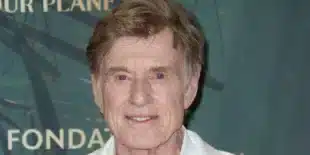At the Toronto International Film Festival premiere of Hayao Miyazaki’s “The Boy and the Heron,” filmmaker Guillermo del Toro aptly remarked that witnessing Miyazaki’s work is like experiencing Mozart compose symphonies. This isn’t an overstatement, especially considering Miyazaki’s status as a legendary anime filmmaker known for classics like “Spirited Away,” “My Neighbor Totoro,” and “Kiki’s Delivery Service.” Each new film by Miyazaki is an event, comparable to the rarity of a successful New York Jets season.
A decade has passed since Miyazaki released “The Wind Rises,” which many believed would be his final film. Yet, the 82-year-old director, known for his numerous retirements, hinted at another comeback. The anticipation grew over the years, culminating in the release of “The Boy and the Heron.” Rumors now suggest Miyazaki may even consider another project.
“The Boy and the Heron” feels like a journey back into a dream world crafted by Miyazaki’s limitless imagination. The film, loosely based on Genzaburō Yoshino’s 1937 novel “How Do You Live?,” portrays a young protagonist dealing with grief while transitioning to a new home. The story begins with harrowing scenes of a Tokyo hospital fire amid World War II bombings, where the protagonist, Mahito, loses his mother.
A year later, Mahito, voiced by Soma Santoki, moves to a country estate with his father and soon-to-be stepmother, Natsuko, who is also his late mother’s younger sister. This narrative bears personal resonances for Miyazaki, who was evacuated to the countryside during the war as a child.
Mahito’s unhappiness leads him to a surreal dimension, guided by an irritable heron, voiced by Masaki Suda, who reveals himself to be a mischievous guide. The film’s fantasy world is rich and vivid, filled with oversized creatures and whimsical elements, a hallmark of Miyazaki’s work. Unlike his previous films, which often ventured into forests or seas, “The Boy and the Heron” is notably avian-themed.
The film doesn’t shy away from depicting violence and cruelty, even in its fantastical setting. It presents a parallel world that mirrors some aspects of Mahito’s real life, including childlike versions of people he knows, like his mother. The narrative leads to an aged wizard, voiced by Shōhei Hino, who maintains this fantastical world but offers to pass it on to Mahito. In a symbolic gesture, Miyazaki seems to be making peace with letting go of his creation, encouraging others to pursue their own imaginative endeavors.
“The Boy and the Heron,” possibly Miyazaki’s farewell, stands as a poignant farewell in recent cinema and a culmination of his exceptional career. The film, a Studio Ghibli release, is rated PG-13 for its violent and bloody imagery. With a runtime of 124 minutes and a rating of three and a half stars out of four, it is a testament to Miyazaki’s enduring artistic vision.


